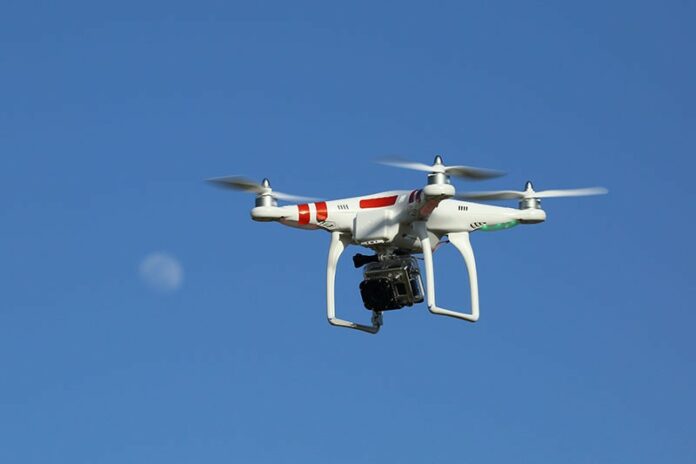As the 2018 wildfire season blazes across headlines and various hotspots in California—some a little close to home—officials in Marin County are ramping up efforts to deploy drones as a potential emergency service tool.
This week, the Marin Independent Journal offered a weighty feature on the Marin County Sheriff’s Office bid to acquire unmanned aerial vehicles (UAVs) for various law enforcement and emergency services uses. The Marin drone plan was outed by a citizen who raised privacy concerns about the incipient program at a recent supervisors meeting.
Bottom line from the IJ report: They’re just getting going on a drone program in Marin County, and any use there would require a policy put in place by the Marin County Board of Supervisors.
Sonoma County, by contrast, already has two drones in its possession, but can’t use them—because there’s no county policy in place governing their deployment.
“Our volunteer Search and Rescue team does own two UAVs,” says Sonoma County Sheriff’s Office spokesman Sgt. Spencer Crum. “However, they have never been used in an operation, as we have never formally developed a policy on their use. We have not placed a priority on getting a policy completed. However, if we ever do, we would seek public input.”
The process in Sonoma County would also include required buy-in from the Sonoma County Board of Supervisors, says Crum.
As the IJ reported, a bill under consideration in Sacramento would require localities to have a written policy in place governing the use of UAVs before any local agency could deploy them. Drones have been heavily criticized by opponents for their potential, for example, to conduct surveillance on unwitting citizens.
Sonoma County has been considering a UAV program since last year, and on Oct. 2, 2017—just a week before the catastrophic wildfires—hosted an open town meeting about their proposed deployment in the county.
The San Francisco–based Electronic Frontier Foundation has been an out-front critic of UAVs ever since 2012, when the Federal Aviation Administration (FAA) promulgated guidelines for the rapidly growing UAV industry, which first took flight in the public imagination as military drones blasted targets in the Middle East. The upgraded FAA regulations, notes the EFF on its website, “includes provisions to make the licensing easier and quicker for law enforcement” as it highlighted the issues with drones that have drawn fire from critics:
“Surveillance drones raise significant issues for privacy and civil liberties. Drones are capable of highly advanced surveillance and drones already in use by law enforcement can carry various types of equipment including live feed video cameras, infrared cameras, heat sensors and radar.”
The controversial devices are, however, also increasingly embraced by firefighters, especially when equipped with thermal-imaging cameras. Those pricey cameras, which according to numerous online sources can add more than $10,000 to the price of a $2,000–$3,000 drone, can detect the body heat of a fleeing perp inasmuch as they can detect a small fire before it becomes a big one.











